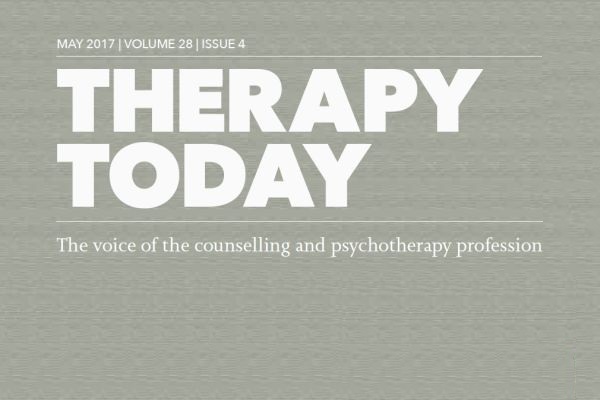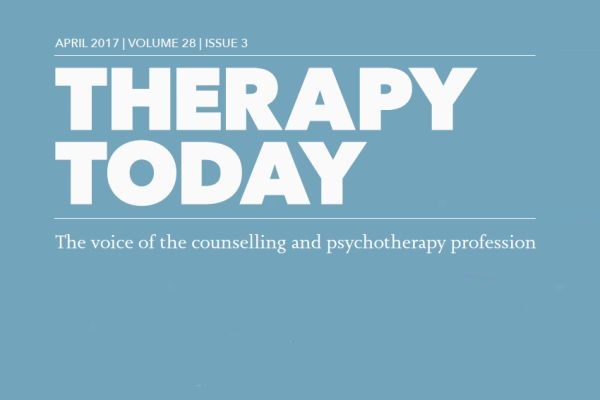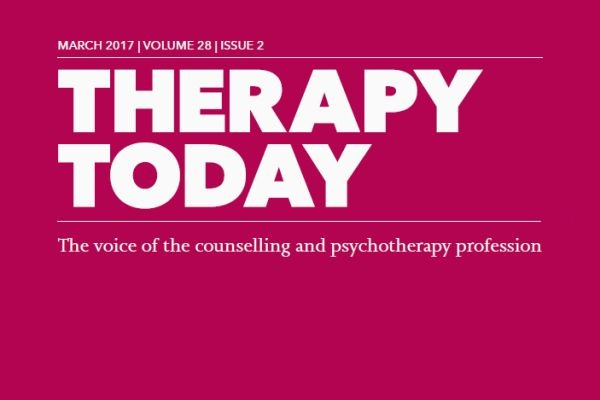We live in paradoxical times. We have more ways to connect than ever before, but loneliness is on the rise.1 We work fewer hours on average than we did 20 years ago,2 but we feel more stressed and overwhelmed.3 We yearn for a ‘slower pace of life’,4 but divide our attention between three digital devices while we ‘relax’.5
The digital revolution has changed our world fundamentally. It has brought global connectivity and greater equality in access to knowledge. But it has also brought new threats to our mental wellbeing. #Status of Mind, a new report from the Royal Society for Public Health (RSPH), says a digital component (including social media) should be included in the training of all mental health professionals who work with young people.6 ‘Digital technologies, including social media, are so entrenched in the lives of young people that it is no longer possible to support their health and wellbeing without some knowledge about the impact these technologies and social media platforms have,’ says report co-author Dr Becky Inkster, Honorary Research Fellow at the University of Cambridge. ‘As health professionals, we must make every attempt to understand modern youth culture expressions, lexicons and terms to better connect with their thoughts and feelings.’
But it’s not just young people’s lives that have been changed: in 2006, just 35% of people in the UK used the internet on a daily basis; by 2016, this figure had increased to 82%.7 In 2007, only 22% of people in the UK had at least one social media profile;8 by 2016, this figure had risen to 89%.9
This article pinpoints some of the chief ways in which the digital revolution is changing us and our clients – whatever our age. Are we, as therapists, as social beings, alert and equipped to deal with it?
The rise of loneliness
Thirteen per cent of us don’t have a single close friend, and one in five of us feels lonely often or all the time.10 And loneliness, while increasingly recognised as a problem for the elderly, is by no means confined to older people: indeed, among those aged 16-24, 65% say they feel lonely at least some of the time, and 32% say they feel lonely often or all the time. By contrast, among people aged 65 or over, 32% say they feel lonely at least sometimes, and only 11% feel lonely often or all the time.10 According to the Mental Health Foundation, the people most worried about feeling isolated are in the 18-34 age group – the generation that has grown up with social media.11 And the more time you spend online, the more socially isolated you are likely to feel, says a recent study of 1,787 adults aged 19–32 by researchers from the University of Pittsburgh.12
‘Technology has fundamentally changed our world and this generation in particular,’ says Dr Jean Twenge, a psychology professor at San Diego State University and author of Generation Me and The Narcissism Epidemic. ‘This generation is more confident, assertive, entitled – and more miserable. We are malnourished from eating a junk-food diet of instant messages, Facebook posts, email and phone calls, rather than the healthy food of live, in-person interaction. When you consider the loneliness felt by many young people today, it’s surprising that a larger number aren’t depressed.’
More anxious, more stressed
According to NHS Digital figures, 37% of adults aged 16–74 are now having treatment for conditions such as anxiety and depression, up from 24% when the last survey was carried out in 2007.13 ‘The pace of life is increasing and we no longer have enough downtime,’ warns Nicky Lidbetter, Chief Executive of Anxiety UK. ‘We are continually bombarded with all sorts of stimuli, the mental equivalent of overworking your body in the gym every day. If you are already predisposed to anxiety and you are on a treadmill-style lifestyle, it’s a perfect storm.’ In a recent survey, GPs reported that 84% of their patient consultations were for anxiety-related conditions.14 Stress and anxiety also account for 45% of sick days.15
Stress is rising too among young adults. Twenge says: ‘I analysed data from 63,706 college students and 13,870 high-school students between 1983 and 2007. Thirty per cent of college freshmen reported feeling “overwhelmed by all I have to do” in 2012, nearly twice as many as in the 1980s. More also described themselves as below average in mental health and reported common psychosomatic symptoms of depression and anxiety. Compared with their peers in 1982, three times as many high-school students in 2012 said they had trouble sleeping most nights and twice as many students reported being seen by a doctor or other professional for mental health issues.’
Always on
One theory behind the rise in stress and anxiety, particularly in young people, is the increased use of digital devices, such as smartphones. The generation of teens to 20s, born since the turn of the century, have been dubbed Generation AO – ‘always on’. About half of all 18- to 24-year-olds check their phones in the middle of the night, a fifth check instant messages or social media notifications, and a seventh reply to instant messages.16
Social media exacerbates the vulnerability of the ego, believes psychotherapist Dr Aaron Balick, author of The Psychodynamics of Social Networking. ‘It’s always been in play, but now it’s in play 24/7 – people are feeling anxious because they are exposed to a constant state of self-presentation to a virtual audience. It’s self-referential rather than narcissistic. There is a danger, particularly for the older-generation therapist, [of being] implicitly dismissive of a person’s online identity that’s created through social networking sites such as Facebook and Instagram. But a selfie is a self-portrait, [and there is] a desire for it to be recognised and responded to by others.’
Emotional outsourcing
Being ‘always on’ also means that today’s young people are in constant contact with each other. The much-publicised downside of this is vulnerability to cyberbullying, but there are also positive effects, as the RSPH report points out:6 ‘Social networking offers young people who may be suffering from mental health issues an opportunity to read, watch or listen to, and understand, the health experiences of others – relating them back to their own reality.’ Social media platforms also offer young people ‘a useful tool to make, maintain or build upon real world interpersonal relationships, creating stronger bonds with people they already know’. According to a Pew Research Center/Elon University survey, digital natives are also more likely to turn to ‘public problem-solving’ through cooperative work such as crowdsourcing.17
But being ‘always on’ may be creating a generation less able to manage their own emotions, believes Rebecca Kirkbride, BACP senior accredited counsellor and author of Counselling Young People: a practitioner manual. ‘When there are people available online at all hours of the day and night to seek advice and support from, whether these are friends who are well known in person or more distant “cyber connections”, young people now are arguably less likely to reflect on their difficulties and find solutions alone than previous generations were, when peers were less readily available.’
So, when they present in the therapy room, are they more likely to expect miracles from their counsellor, and outsource to us the responsibility for their feeling better? ‘What we might find is less familiar to them is when the therapist says, “How else might we think about this?”, so creating a space of uncertainty, rather than coming up with, “This is what I think, or this is what is right”, which they may be used to hearing from their online networks,’ she believes.
Compulsive comparison
Life can turn into a performance, particularly for young women, says psychotherapist Susie Orbach in her new book, In Therapy: how conversations with psychotherapists really work. ‘There are only 40,000 teenagers who aren’t online out of four million. And of those, the girls who post selfies want something like 124 likes on average. They get 26. If they do not get the likes they want, that pulls them right down. So, their whole lives are about representation and validation. It’s about the production of a body. It’s not about living in one,’ she says. Studies have shown that young girls and women in their teens and early 20s who view Facebook for only a short period of time have greater body-image concerns than non-users.18
Research has found that excessive use of social media can create feelings of envy and the distorted belief that others lead happier and more successful lives.12 Not surprisingly, the 16–24 age group are by far the most active social media users: 91% use the internet for social media compared with 51% of 55- to 64-year-olds and only 23% of over-65s.19 But problems may arise if there is a big gap between the ‘perfect’ image that you have created through carefully controlled and edited online activity and your real-life identity. In his paper ‘Social Media, Social Avatars and the Psyche: is Facebook good for us?’,20 consultant forensic psychiatrist David Brunskill predicts that, if we become ‘ever more image obsessed, self-promotion will overtake self-awareness’. According to the RSPH report,6 the platform that’s most likely to create this ‘gap’ is Instagram, which it says feeds a ‘compare and despair’ mindset, increasing both dissatisfaction with body image and fear of missing out (FOMO).
A recent study by the University of Leeds identified a ‘compulsive internet habit’, where users replaced real-life interaction with online chatrooms and social media sites or browsing porn and gaming sites, to such an extent they could be labelled internet addicts.21 ‘Our research indicates that excessive internet use is associated with depression, but what we don’t know is which comes first – are depressed people drawn to the internet or does the internet cause depression?’ says Dr Catriona Morrison, Senior Lecturer in Experimental Psychology and Director of Learning and Teaching for the Institute of Psychological Sciences at the University of Leeds. ‘What is clear is that, for a small subset of people, excessive use of the internet could be a warning signal for depressive tendencies.’ There are some small-scale studies that also suggest a link between excessive use of Facebook and incidence of obsessive-compulsive disorder.22
Kirkbride advises practitioners to be as curious about their clients’ online social networks and behaviours as they are about their relationships at school and home. ‘Practitioners are uniquely placed to help young people think about and reflect on the tensions between their online and “real” lives, in order to make meaning and sense of their existence and identity at a crucial point in their development,’ she says. ‘I find clients coming to me and saying, “My parents have taken away my phone as punishment.” Some parents have little realisation about what that means to the teenager and their identity and their social connections.’
Meeting and parting
Twenty-seven per cent of new relationships now start via a dating website or dating app, according to the Online Dating Association.23 It’s not just the younger generation who date online: according to an Age UK survey, 38% of people aged 50-59 and 37% of those aged 60-69 met their partners online.24
But along with the convenience of having a greater choice of partners available at the click of a mouse come new challenges in the emotional arena, such as ‘breadcrumbing’ (being on the receiving end of sporadic messages that keep you ‘hanging on’ for someone who has no intention of taking the relationship further), and ‘ghosting’ (the ending of a relationship by abruptly cutting off all contact). Plus, not every online dater is looking for a relationship. According to a 2016 survey by HTC, 24% of people surveyed said they continued to keep their profile active even when in a relationship.25 ‘People use sites such as Tinder to get validation – how often they get “swiped right”,’ says psychologist Dr Martin Graff from the University of South Wales.
And it seems to be more talk than action. A recent survey of 27,000 people that found that young adults aged between 20 and 24 and born in the 1990s were more than twice as likely as those born in the 1960s to report that they had had no sexual partners since the age of 18.26 ‘What we are seeing is this group is less likely to hook up, so to speak, than previous generations,’ says study co-author Ryne Sherman, Associate Professor of Psychology at Florida Atlantic University.
Playing out our relationships more publicly online inevitably has its flip side, says Graff. ‘At the very beginning of a relationship, for example, the one thing we all probably do (even if we don’t admit it) is check out a new love interest online. There is also evidence that online surveillance continues into married life, not only motivated by the desire to find out what a partner may be doing offline, but also what they do online — further evidence that we now live in a part-time online world as well as an offline one.’
But making a ‘clean break’ from former partners is harder than before. One-third of people say they use Facebook to monitor the activities of former partners, according to one survey.27 ‘Before the advent of social media, when a relationship was over, you could choose to have little contact. Now, it’s possible to “watch” each other’s lives on sites such as Facebook,’ says Graff. Actively monitoring an ex on social media has been linked to greater distress and difficulty in moving on from a relationship.28
Where next?
The experiences our clients bring into the therapy room are a microcosm of the cultural changes happening in the wider world. Inevitably, the digital revolution of recent decades has affected our work with clients and the issues they bring into the room. But how? What is happening in your counselling room? How well are we equipped to respond to the changes going on in our wider world?
For good and ill, the digital revolution is unstoppable, but we can go forward armed with some of the learnings from the first generations of the digital age.
Sally Brown is a counsellor and coach in private practice (therapythatworks.co.uk), a freelance journalist, and Executive Specialist for Communication for BACP Coaching.
More from Therapy Today

Tap and talk
Free article: Sally Brown asks if counselling is reaping the whirlwind of the digital revolution. Therapy Today, May 2017

What turns the lights back on?
Free article: Sally Brown reports on what neuroscience is discovering about the effects of depression on the human brain and the changes wrought by therapy. Therapy Today, April 2017

Is counselling women's work?
Free article: Female counsellors outnumber male by more than five to one. Sally Brown wonders why. Therapy Today, March 2017
References
1. bit.ly/2qiPchv
2. bit.ly/2pfwxr3
3. bit.ly/2qiLGE6
4. bit.ly/2qO6jLH
5. bit.ly/2ryL0ih
6. bit.ly/2rvYrN5
7. bit.ly/2fQOUi1
8. bit.ly/2fM9JLD
9. bit.ly/2dVPCYt
10. bit.ly/2qawlKn
11. bit.ly/2qOa5oh
12. Primack BA, Shensa A, Sidani JE et al. Social media use and perceived social isolation among young adults in the US. American Journal of Preventative Medicine 2017 (in press): http://dx.doi.org/10.1016/j.amepre.2017.01.010
13. bit.ly/2ryVcri
14. bit.ly/2qV3V44
15. bit.ly/2qa7WEY
16. bit.ly/2edHLYL
17. www.elon.edu/e-net/Article/59585
18. Tiggeman M, Slater A. The internet and body image concerns in preteenage girls. The Journal of Early Adolescence 2013; 34(5): 606–620. doi: 10.1177/0272431613501083
19. bit.ly/2d6YHyz
20. Brunskill D. Social media, social avatars and the psyche: is Facebook good for us? Australasian Psychiatry 2013; 21(6): 527–532.
21. Morrison CM, Gore H. The relationship between excessive internet use and depression: a questionnaire-based study of 1,319 young people and adults. Psychopathology 2010; 43: 121–126.
22. Lee S-l, Park MS-A, Tam C-L. The relationship between Facebook attachment and obsessive-compulsive disorder severity. Cyberpsychology: Journal of Psychosocial Research on Cyberspace 2015; 9(2), article 1. doi: 10.5817/CP2015-2-6
23. Mintel Group. Online dating – UK. London: Mintel Group Ltd; 2015.
24. bit.ly/2qf3fFI
25. bit.ly/2qV49YY
26. Twenge JM, Sherman RA, Wells BE. Changes in American adults’ reported same-sex sexual experiences and attitudes, 1973–2014. Archives of Sexual Behaviour 2016; 45(7): 1713–1730. doi:10.1007/s10508-016-0769-4
27. Chaulk K, Jones T. Online obsessive relational intrusion: further concerns about Facebook. Journal of Family Violence 2011; 26: 245–254.
28. Marshall TC. Facebook surveillance of former romantic partners: associations with postbreakup recovery and personal growth. Cyberpsychology, Behaviour and Social Networking 2012; 15(10): 521–526.
